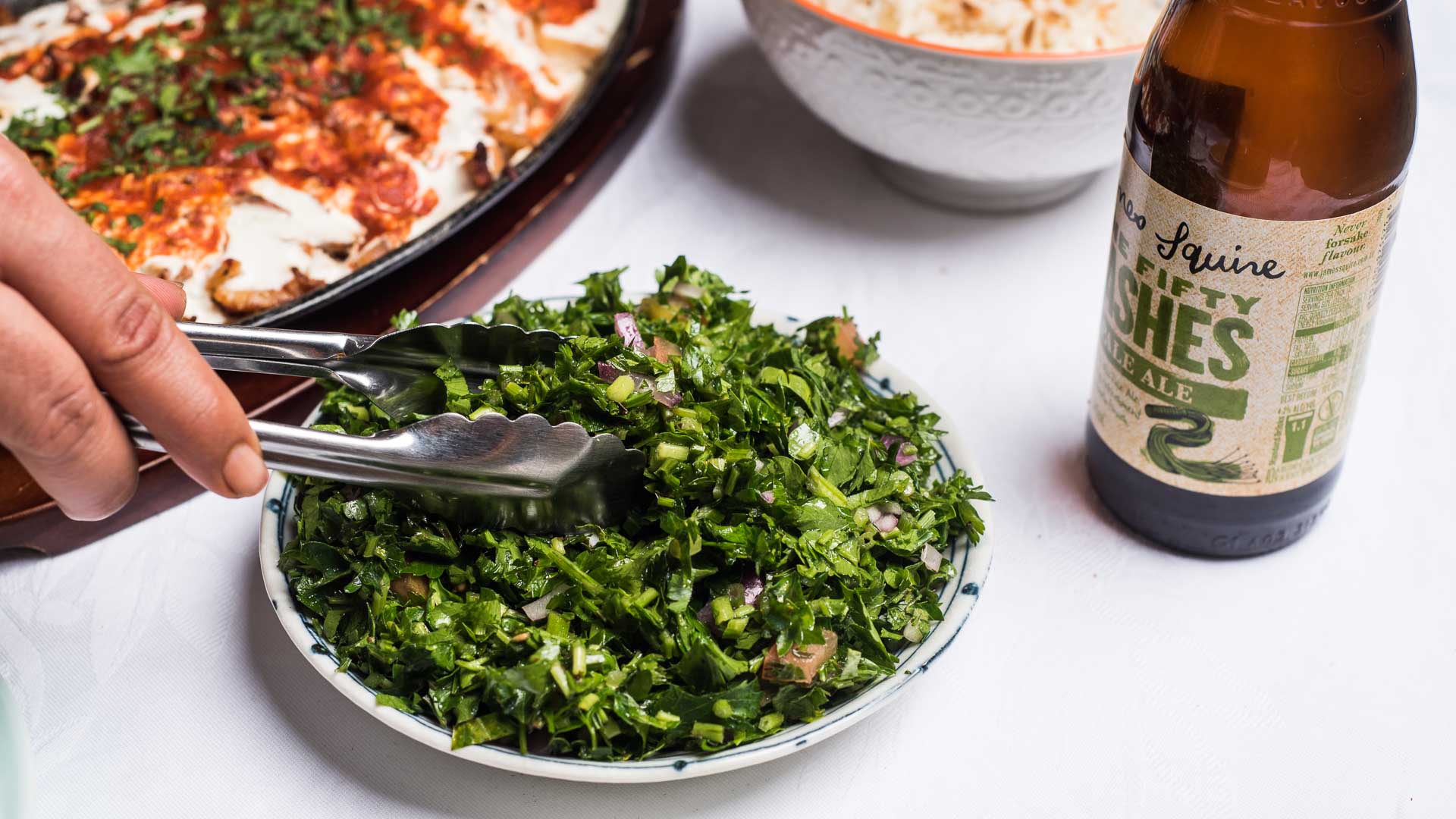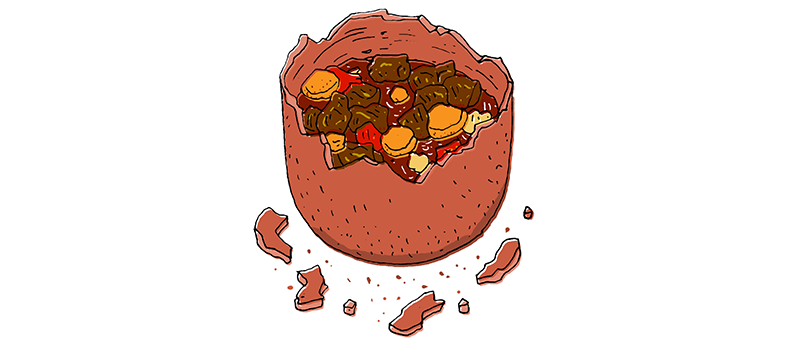
Turkish Kebabs
While kebabs may be something we recognise as an end-of-the-night snack, the history and varieties of the humble dish go far beyond a lamb sandwich with extra garlic sauce at 3am.
From the classic skewered shish kebab, to a mixture of meat and rice served in a broken clay pot, the iterations of the kebab are endless, changing over time and geographical location, with a whole host of Asian, African and Middle Eastern cultures boasting their own versions. Turkey, however, has always been one of the biggest melting pots of kebab innovation, and the Turkish style has spread all over the entire world, giving us the dishes we know — and crave — today. Now’s the time to look past your late night wrap, and discover the different kebabs to try — you’ll also want to consider pairing these with a few refreshing brews, trust us.
Turkish Kebabs
Fun facts about

Invented the vertical grill in the 1800s, changing the way kebabs were prepared forever. There’s also a regional kebab named after him.

Where kebabs are one of the most popular street foods due to a large Turkish population.

Stands for ‘sos, sogan, kasar’ or sauce, onion, cheese — the only thing a kebab needs.

A tangy turnip juice kebabs are traditionally served with in Adana, Turkey’s fifth largest city.
A BITE-SIZED HISTORY OF TURKISH KEBABS
The word kebab comes to English from Persian via the Turkish word for ‘fry’. It’s thought the practice of grilling meat on a skewer comes from soldiers skewering meat on their swords in the field. It’s a nice story, but the practice of cooking meat in that way has been around since the human discovery of fire.
Turkish styles of kebab use grilled meat, either chopped or minced, cooked slowly and usually served with bread or grains. While the skewered ‘bab has remained popular throughout its history, tightly stacking slices of meat on a larger, rotating skewer, and cooking them on the vertical mangal (grill) has given rise to the modern Turkish doner kebab — the most popular in the western world. As Turkish kebabs have spread around the world and taken on bold, new flavours, they’ve also heavily influenced other cuisines and dishes, like the Greek gyro.

THE MANY VARIETIES OF TURKISH KEBABS
The Turkish kebab has changed like nobody’s business in the past few hundred years, so the question of “what’s traditional” is a hard one to answer. Each region does the kebab differently by telling various stories, serving it their own way, and claiming to have the best. There’s only one way to find out who is right.

EATING ETIQUETTE
With the different styles and varieties of kebabs all being served in different ways, the etiquette of eating them is something that’s a little harder to pin down with general rules. For example, if you’re eating a kebab that’s served in a bun like a burger, the rules that apply to the shish kebab aren’t going to apply here.
The best thing to do is to look how the kebab is served. Got yourself a delicious doner kebab, all wrapped up in toasted lavash bread? That there is a sandwich that needs to be eaten with hands. However, if you find yourself with meat still on a skewer, things get a little more dicey. The rule here seems to be that if it’s a starter dish, tear that juicy meat from the skewer with nothing but your teeth. If it’s the main course, it’s more polite to take your mouthfuls from the skewer with a knife and fork first. It’s also essential to remember your pleases and thank yous, so drop a little “Afiyet olsun” before the meal (“may what you eat bring well being”), and make sure to give your host a “Elinize saglik” when you’re done — it’s a compliment that translates to “bless your hand”.
A PERFECT COMBINATION
Even though the humble kebab is something often enjoyed after a few drinks, the complexity of the flavours in the varying styles of kebabs lend themselves as excellent accompaniments to an adult beverage like beer. The slew of cooking methods and marinades give kebab meats a rich, spiced flavour that pairs with a whole host of beer styles
If you’re chowing down on a kebab with tomato flavours and the bright, almost acidic notes of yoghurt, selecting a crisp lager like XXXX GOLD is a good option. Lagers tend to rely less on punchy fruit flavours, and are instead more understated, allowing the kebab to do all the talking. There’s also something like Little Creatures Pilsner that matches the mouthwatering, savouriness of a kebab without being too heavy. However, spicier kebabs could benefit from buddying up with a pale ale like James Squires One Fifty Lashes to add a more rounded characteristic to each mouthful.
Hungry for more? Get your fix at the Melbourne Night Noodle Markets by Beer The Beautiful Truth from November 9 to 26.
Illustrations: Barry Patenaude.
Images: Kimberley Low.
Discover more eats
-
Event
Night Noodle Markets 2017
One of Melbourne's biggest Asian food events returns for 18 nights of noodles, dumplings and other delights.
-
Feature
Encyclopedia of Eats: Vietnamese Noodle Soups
Chances are you've eaten a few bowls of pho in your time — but that's just the start of Vietnam's vast pool of soup varieties.
-
Feature
Encyclopedia of Eats: French Cheese
You can never go wrong with cheese — the French have made sure of that. Up your fromage savoir-faire, from melty Pont L'Eveque to pungent Roquefort.
-
Feature
Encyclopedia of Eats: Pasta
Italian pasta. A staple that defines a nation and is loved the world over. Get to know your pappardelle from your campanelle from your farfalle.
-
Feature
Encyclopedia of Eats: Sushi
Next time you're sitting blankly at a sushi train, know your nigiri from your tamagoyaki and oshizushi.
-
Feature
Encyclopedia of Eats: Chinese Dumplings
Get to know China’s ten most famous dumplings, and impress the group next time you're feasting on the doughy delights.
-
Feature
Encyclopedia of Eats: Mexican Street Food
From tacos to tamales, sample Mexico's world-famous cuisine right here in Australia. Discover some of the best snacks to order.
-
Feature
Encyclopedia of Eats: Indian Street Food
As varied as it is delicious, Indian food is a firm favourite the world over — but don't limit yourself to only curries.



















